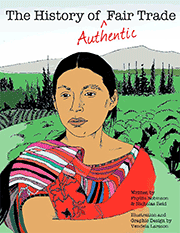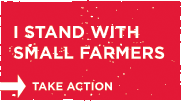I read Michael Sheridan’s reflections about the recent article in The Nation, “The Brawl over Fair Trade Coffee,”but had too many comments to respond on the CRS Coffeelands blog that he hosts. I have a great deal of respect for Michael and always appreciate his thoughtful, intelligent approach and his commitment to on-the-ground development work with farmers. However, while I applaud Michael’s attempts to be objective, I was left puzzled by some of the logic behind his critique of The Nation article and his apparent support for the Fair Trade For All initiative.
Michael’s biggest critique of The Nation article seems to be two-fold: 1) while there is near unanimous agreement that “the process by which FT4All came to be violated core Fair Trade values of transparency and dialogue” and the fact that the initiative includes elements opposed by most of the Fair Trade community, it is somehow unfair to criticize the initiative until we see the results; and 2) those who criticize “corporate” Fair Trade are not recognizing the benefits it has generated for smallholder farmers.
I tried to read Michael’s comments with an open mind, but I’m afraid that I’m still plagued by two critical issues which I just can’t overlook. They are as follows:
1. Is it possible to “empower” farmers with one hand while stripping away their power with the other? In a system whose very foundation and philosophy was built upon the principles of strong and equitable relationships, democratic processes, deep integrity and trust, can an organization take unilateral actions which fly in the face of all those principles and still expect their initiative’s results will be judged impartially? Is it even possible to evaluate results while ignoring process when the whole basis of the Fair Trade system is to create a new way of conducting trade and doing business which most of all includes respect and integrity?
In his response to Michael Sheridan’s comments, Jonathan Rosenthal makes this point beautifully. He compares Fair Trade USA’s actions to a political candidate who proposes “…to bring direct financial prosperity to women or people of African heritage along with rescinding their voting rights…” saying, “…clearly, we would focus on the loss of rights, not on the programs for financial prosperity.” I couldn’t agree more with Jonathan. (more…)



